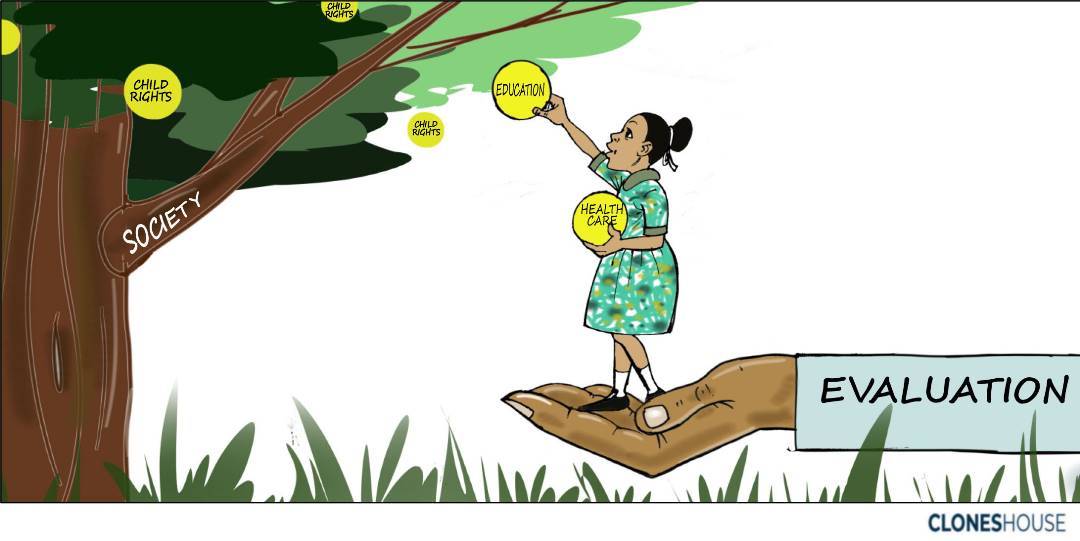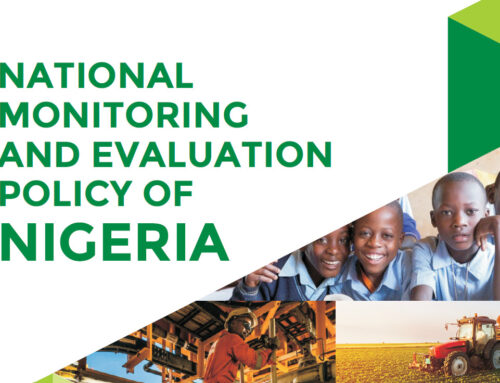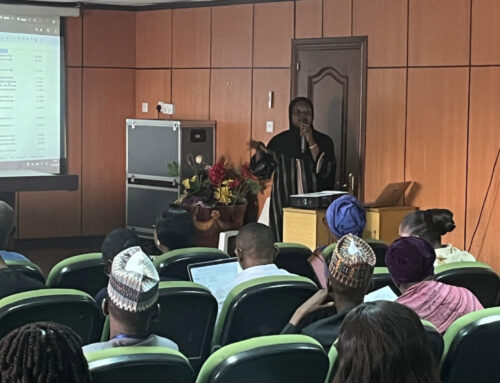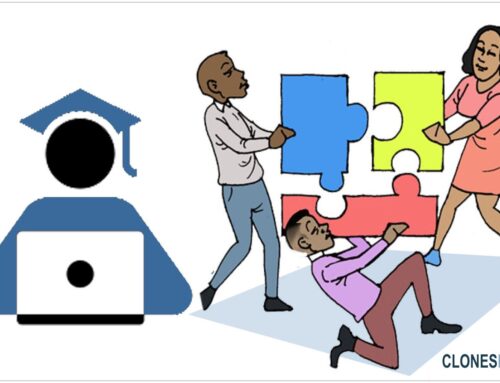Children are our society’s most vulnerable members, and their rights must be preserved at all costs. Various organizations worldwide have worked tirelessly to ensure children’s rights are respected, protected, and fulfilled. These groups have created programs for children to access education, health care, and other necessities.
However, the success of these programs is often measured by their impact on the lives of children. Therefore, monitoring and evaluation (M&E) of child rights programs are essential to ensure that these programs are effective and accountable. M&E helps to ensure that child rights programs are transparent, responsive, and meet the needs of children.
Let me tell you a tale of a young girl named Amaka to demonstrate the significance of M&E in child rights initiatives. Amaka resides in a rural village in a developing nation with few educational opportunities. She traveled several kilometers daily on foot to a subpar school with subpar facilities, where she received a subpar education. In Amaka’s community, a new school with up-to-date amenities and qualified instructors opened one-day thanks to the efforts of an NGO. Amaka was ecstatic and joined the school right away. She was adamant about getting the greatest education and following her aspirations. This was made possible because the NGO in charge of the school had an excellent M&E system in place. The method assisted in identifying operational and performance shortcomings at the school. The NGO acted quickly, and the school’s facilities and additional training for teachers to improve their teaching skills were renovated. Amaka’s academic performance improved dramatically, and she regained her zest for learning. This narrative emphasizes the critical importance of monitoring and evaluation in maintaining the effectiveness and accountability of child rights programs. M&E assists in identifying gaps and difficulties that must be addressed as soon as possible.
There are various M&E approaches that organizations can use to strengthen accountability in child rights programs. These approaches include:
- Outcome mapping: This approach focuses on the changes in behavior, attitudes, and relationships of the program’s beneficiaries. It helps to identify the program’s impact on children’s lives. Outcome mapping is typically conducted during the monitoring and evaluation (M&E) phase of a project or program. It is a participatory approach that helps organizations and institutions understand and assess the changes they are seeking to bring about through their interventions. Outcome mapping focuses on the outcomes and impacts of a program and aims to capture the complex pathways of change. In general, outcome mapping provides a comprehensive and flexible framework for understanding and evaluating the outcomes and impacts of programs. It emphasizes learning, adaptability, and stakeholder engagement, making it a valuable tool for organizations seeking to bring about meaningful change.
- Participatory monitoring and evaluation: This approach involves program beneficiaries, including children, in the M&E process. It helps to ensure that children’s voices are heard, and their perspectives are considered in decision-making processes. Participatory monitoring is typically carried out throughout the monitoring and evaluation (M&E) process, involving active participation and engagement of stakeholders. It is an approach that emphasizes the involvement of those directly affected by a program or intervention in monitoring and evaluation activities. Participatory monitoring helps ensure that the stakeholders’ perspectives, voices, and knowledge are integrated into the M&E process, leading to more accurate and relevant data and insights.
An example of the use of participatory monitoring can be seen in a community development project aimed at improving access to clean water in a rural village. In this case, the project team engages the community members, including women, men, and youth, in the monitoring process. They conduct regular meetings and discussions to gather feedback, observations, and data on the availability and quality of water and the impacts of the intervention on the community’s well-being. The community members actively participate in data collection, using methods such as surveys, interviews, and participatory mapping exercises. The collected data is then analyzed jointly by the project team and community members to assess progress, identify challenges, and make informed decisions for future actions. This participatory monitoring approach ensures that the voices and perspectives of the community are valued and integrated into the evaluation process, leading to a more inclusive and contextually relevant assessment.
- Real-time monitoring: This approach involves using technology to collect and analyze real-time data. It helps to identify issues as they arise and enables organizations to take prompt action to address them. Real-time monitoring is typically carried out during program implementation, allowing for the timely collection, analysis, and use of data to inform decision-making and make necessary adjustments. The frequency of real-time monitoring can vary depending on the nature of the program and the availability of resources. It can be conducted daily, weekly, biweekly, or monthly, depending on the needs and requirements of the program.
Various technologies can be used for collecting real-time data during monitoring and evaluation. Some examples include:
- Mobile data collection tools: Mobile apps or platforms that enable data collection using smartphones or tablets. These tools allow for data collection directly in the field, with real-time synchronization and data validation.
- Sensor-based technologies: Devices or sensors that collect data automatically, such as GPS devices, temperature sensors, or motion sensors. These technologies provide real-time data on specific variables of interest.
- Remote sensing and satellite imagery: Technologies that utilize satellite imagery or aerial photography to collect data on land cover, vegetation, or other environmental factors. These data sources can provide near-real-time information on changes in the landscape.
- Web-based data platforms: Online platforms that facilitate data collection, storage, and analysis. These platforms allow for real-time access to data from multiple sources and enable collaborative monitoring and evaluation efforts.
I remember during my geological field research work at Bakumba Oworro, Kogi State, we utilized various technologies to carry out effective real-time data monitoring. Our team employed the use of GPS (Global Positioning System) devices to accurately record the geographical coordinates of our sampling locations, allowing us to document the spatial distribution of geological features precisely.
In addition, we used an Abem resistivity terrameter, which helped us measure subsurface resistivity to infer the presence of geological formations and potential groundwater resources. The terrameter provided us with real-time readings, allowing us to make on-the-spot decisions regarding the positioning of subsequent measurements and adjustments to our survey design.
To process and interpret the collected data, we utilized the IPI2WIN software, a powerful tool for inversion modeling and data analysis in electrical resistivity surveys. This software enabled us to visualize and analyze the resistivity data in real time, aiding in identifying and characterizing subsurface geological structures.
By employing these technologies, we enhanced the efficiency and effectiveness of our geological field research. The real-time data collection and analysis capabilities provided us with immediate insights, enabling us to make informed decisions and adapt our research approach as needed throughout the fieldwork.
Finally, monitoring and evaluation ensure that child rights programs are effective and responsible. It aids in identifying gaps and issues that must be addressed as soon as possible, and it ensures that child rights initiatives are transparent and responsive to the needs of children. Organizations can increase accountability in their child rights programs and ensure that children’s rights are respected, protected, and realized by employing M&E methodologies such as outcome mapping, participatory monitoring and evaluation, and real-time monitoring.
Reference:
- Shaw, T. (2014). Participatory Monitoring and Evaluation. In A. Shah, D. Stoker, & V. Tufte (Eds.), Participatory Practices in Development Cooperation: A Companion Guide (pp. 211-234). Practical Action Publishing.
- Open Data Kit (ODK): https://opendatakit.org/
- SurveyCTO: https://www.surveycto.com/
- CommCare: https://www.commcarehq.org/
- Tableau: https://www.tableau.com/
- Power BI: https://powerbi.microsoft.com/
- Google Data Studio: https://datastudio.google.com/
About the Author
Omeje Richard is a versatile individual dedicated to creating positive change. With a Geology degree and data analysis expertise, Richard excels as a monitoring and evaluation officer. He has worked on research projects like “Freedom of Expression in West Africa” and “Women’s Participation in Politics in West Africa.” Richard’s commitment to children’s rights extends beyond his professional work, evident in his personal life and five academic publications in international science journals. Through his diverse talents in data analysis, research, and music, Richard aims to make a meaningful impact in society for children and beyond.





I am ready to mornintoring and evaluating the volnerable child at any where at any time
I am ready to mornintoring and evaluating the volnerable child at any time
Understandable
That’s a very good job.
I am very interested for this and I’m ready to monitoring and evaluating the volnerable child at any time
Very good job
I am ready to monitoring and evaluating
Thank you so much I’m ready to mornintoring and evaluating the volnerable child at any time